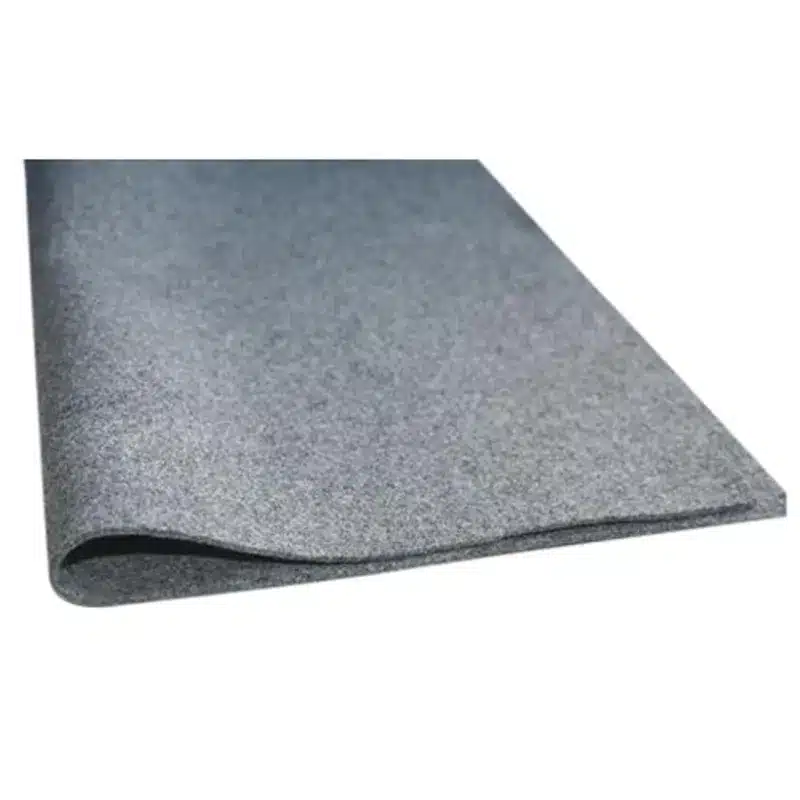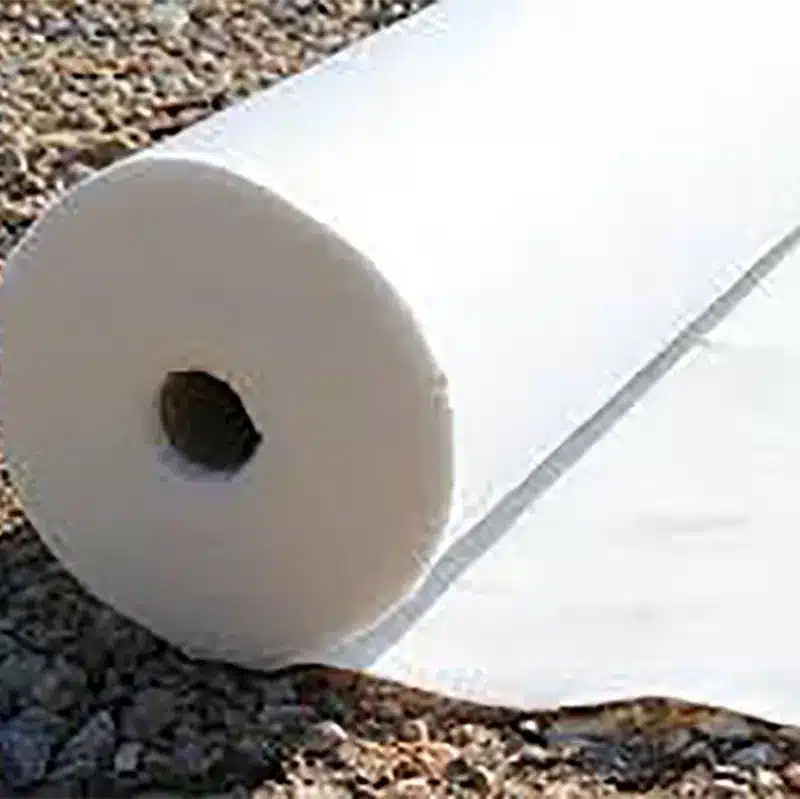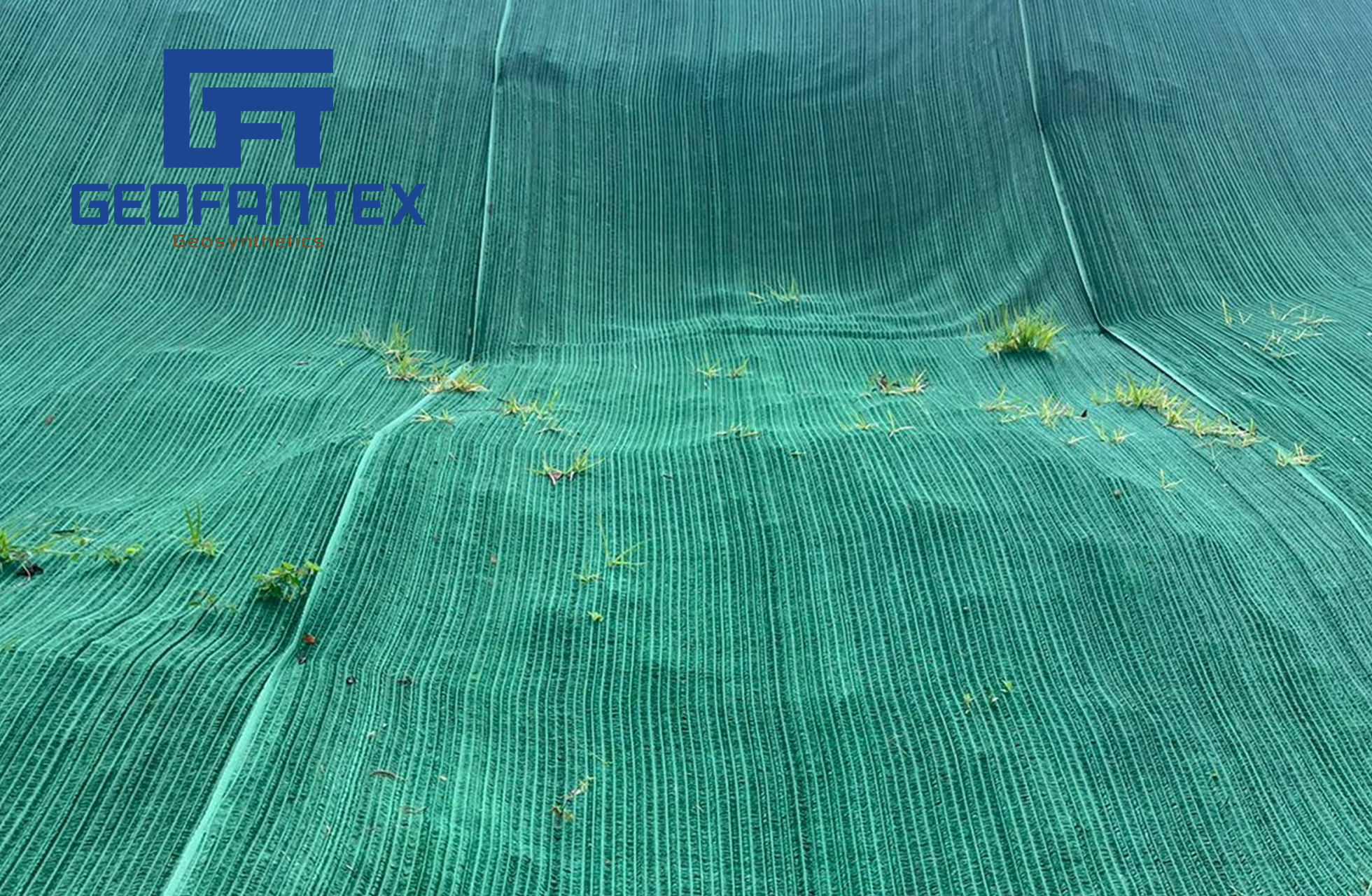+86-159 9860 6917
info@geofantex.com
geofantex@gmail.com
+86-400-8266163-44899
Driveway fabric is an essential material for constructing a driveway with a supportive base layer that helps create a more stable surface, resisting ruts and potholes.
The Difference Between Woven and Non-Woven Fabrics
Definition and Characteristics:
- Woven Fabrics:
- Definition: Made by interlacing two sets of yarns at right angles to each other.
- Characteristics: Durable, strong, less stretchable, and available in various patterns.
- Texture: Generally smoother and more structured.
- Non-Woven Fabrics:
- Definition: Made by bonding or felting fibers together using heat, chemicals, or mechanical processes.
- Characteristics: Lightweight, more flexible, and often more breathable.
- Texture: Usually softer and less structured.
Manufacturing Processes:
- Woven Fabrics:
- Process: Created on a loom, where warp (longitudinal) and weft (latitudinal) yarns are woven together.
- Types: Plain weave, twill weave, satin weave, etc.
- Non-Woven Fabrics:
- Process: Fibers are laid together and bonded using methods such as needle punching, spun bonding, melt-blowing, or chemical bonding.
- Types: Spunbond, melt-blown, air-laid, wet-laid, etc.
Uses:
- Woven Fabrics:
- Applications: Clothing, upholstery, curtains, bags, and more durable items.
- Examples: Denim, canvas, silk, and cotton fabrics.
- Non-Woven Fabrics:
- Applications: Disposable items like medical masks, wipes, filters, insulation, and geotextiles.
- Examples: Surgical gowns, disposable diapers, felt, and certain packaging materials.
Advantages and Disadvantages:
- Woven Fabrics:
- Advantages: High strength, durability, better dimensional stability.
- Disadvantages: Can be heavier, less breathable, and more expensive to produce.
- Non-Woven Fabrics:
- Advantages: Cost-effective, high breathability, lightweight, can be produced quickly.
- Disadvantages: Generally less durable, can tear more easily, and limited to certain applications.

Straightforward Application
Application Process:
- Preparation: Research the company or institution. Gather all necessary documents (resume, cover letter, references).
- Online Application: Visit the official website. Navigate to the careers or admissions section. Fill out the application form with personal details and qualifications.
- Document Submission: Upload the required documents (resume, cover letter, transcripts). Ensure all documents are in the specified format (PDF, Word).
- Review: Double-check the application for errors. Ensure all fields are filled out accurately.
- Submission: Submit the completed application form. Confirm receipt of the application via email or the application portal.
- Follow-Up: Wait for a response from the company or institution. Follow up with a polite email if you do not hear back within the specified timeframe.
Driveway Fabric Under Asphalt
- What Kind of Rock (Aggregate) to Use: The aggregate should be crushed and angular with a one-inch diameter and 10% dust. Limestone is a good choice, but other stone materials will also work well. Recommended stone types include Dense Grade Aggregate (DGA) or Crusher Run. Avoid using stones larger than one inch in size and rounded stones.
- Mistakes to Avoid When Building a Gravel Driveway: Gravel driveways require less investment than paving and can last just as long if built correctly. Avoid these common mistakes:
- Soft, Mushy Ground: Do not spread gravel on soft, mushy ground. Remove all topsoil down to hard rock for a stable bed. You can place the topsoil elsewhere for future use.
- Poor Drainage: Proper leveling is crucial to avoid drainage problems. Improper drainage will cause silt to erode and weaken the gravel, resulting in a mess. Place a layer of geotextile fabric between your subsoil and the bottom layer of gravel to prevent this.
- Prevent Gravel Migration: Use a gravel paver product to keep gravel in place, resist rutting, and provide a stable surface. Alternatively, install sides to the driveway using wood, brick, or concrete blocks to prevent gravel from spreading outside the driveway parameters.
- Wrong Size and Shape of Gravel: The base layer of gravel should be 3 to 4 inches in diameter and angular with sharp edges. The top layer should not have pieces larger than a golf ball. The total thickness of the driveway should be approximately 12 inches.
- Compacting Each Layer: Each gravel layer should be compacted to maintain the driveway’s shape. Layers should be about 4 inches thick, with smaller gravel pieces in each successive layer. Use a hand-operated roller or machine to compact each layer.
- Driveway Fabric: As a homeowner, constant repairs to your driveway can be costly. Many choose gravel driveways for their lower maintenance and cost. Landscape fabric designed for this purpose provides excellent drainage, keeps gravel even, and prevents weeds, increasing the driveway’s lifespan at a minimal cost.
Why Use Landscape Fabric Under Your Driveway?
Using landscape fabric, also known as geotextile fabric, under your driveway can provide several benefits:
Weed Control
- Barrier Against Weeds: Landscape fabric prevents weeds from growing up through the driveway. It acts as a barrier that stops weed seeds in the soil from sprouting.
Erosion Control
- Prevents Soil Erosion: By stabilizing the soil beneath the driveway, landscape fabric helps to prevent soil erosion, which can undermine the structural integrity of the driveway.
Improved Drainage
- Enhanced Drainage: The fabric allows water to pass through while keeping the soil in place. This improves drainage and reduces the risk of water pooling or erosion beneath the driveway.
Increased Durability
- Prolongs Driveway Life: By preventing soil movement and weed growth, landscape fabric helps to maintain the driveway’s structural integrity, thereby prolonging its lifespan.
Easy Installation
- Simple to Install: Installing landscape fabric is a relatively straightforward process that can be done before laying down the gravel or paving material for the driveway.
Cost-Effective
- Cost Efficiency: The use of landscape fabric can reduce the need for future maintenance and repairs, making it a cost-effective choice in the long run.
Installation Tips:
- Proper Preparation: Clear the area of vegetation and debris before laying the fabric.
- Overlap Edges: When laying the fabric, overlap the edges to prevent gaps where weeds could emerge.
- Secure Fabric: Use landscape pins or staples to secure the fabric in place.
- Cover Appropriately: Ensure the fabric is fully covered with the chosen driveway material, whether gravel, stone, or pavers.
Overall, using landscape fabric under your driveway is a practical solution to enhance durability, control weeds, improve drainage, and reduce maintenance costs.
Do You Really Need Fabric for Your Driveway?
Using fabric for your driveway, specifically geotextile fabric can be beneficial depending on the specific circumstances and requirements of your driveway project. Here are some reasons why you might consider using geotextile fabric:
Benefits of Geotextile Fabric for Driveways:
- Soil Stabilization: Geotextile fabric helps in stabilizing the soil underneath the driveway. It prevents the mixing of subgrade and aggregate, maintaining the structural integrity of the driveway.
- Drainage Improvement: It allows water to pass through while preventing soil from migrating, which improves drainage and reduces water pooling that can damage the driveway over time.
- Erosion Control: The fabric helps in controlling erosion by holding the soil in place, which is especially important in areas with heavy rainfall or water flow.
- Weed Prevention: It acts as a barrier to weeds, reducing maintenance and ensuring the driveway remains clean and weed-free.
- Load Distribution: Geotextile fabric distributes the load more evenly, reducing the risk of ruts and depressions forming due to heavy vehicles.
Situations Where Geotextile Fabric Might Be Necessary:
- Poor Soil Conditions: If your driveway is built on clay or other weak soils, geotextile fabric can provide the necessary support to prevent shifting and sinking.
- High Traffic Areas: For driveways that will experience heavy traffic or the frequent passage of heavy vehicles, geotextile fabric can enhance durability and longevity.
- Wet or Flood-Prone Areas: In areas prone to flooding or with high water tables, geotextile fabric can improve drainage and prevent water damage to the driveway structure.
When Geotextile Fabric Might Not Be Necessary:
- Stable, Well-Drained Soils: If the soil under your driveway is stable and well-drained, the benefits of geotextile fabric might be less pronounced.
- Low-Traffic Driveways: For driveways that will see minimal use and light traffic, the additional stabilization and load distribution provided by geotextile fabric may not be critical.
- Cost Considerations: If budget is a major concern, and the driveway conditions are generally good, you might opt to forego the fabric.
While geotextile fabric is not always necessary, it can offer significant benefits in terms of stability, drainage, and durability for driveways, especially in challenging soil or high-traffic conditions. Evaluating the specific needs of your driveway project will help determine whether the investment in geotextile fabric is justified.

How Landscape Fabric Works Under Gravel
Landscape fabric withstands the wear and tear of vehicles, increasing driveway durability. A geotextile or driveway fabric offers stabilization, reinforcement, separation, filtration, and drainage. It prevents the first rock layer from sinking, separates the ground from the gravel layers, and allows water to flow through without soil erosion.
- Woven vs. Non-Woven Fabric: For gravel driveways, woven landscape fabric is the best choice. It provides stability and allows water passage, unlike non-woven fabrics, which are better for filtration but not stabilization.
- The Benefits of Woven Landscape Fabric: Woven fabric offers excellent stabilization due to its construction, maintaining the driveway’s shape. It comes in standard, intermediate, and heavy-duty grades. Standard and intermediate grades are suitable for residential use, while heavy-duty grades are for commercial projects.
Gravel Driveways: Benefits
- Affordability: Gravel driveways are cheaper to install and maintain compared to asphalt or concrete. You can do it yourself, saving on labor costs.
- Minimal Maintenance and Longevity: Gravel driveways last a long time with little maintenance. Regular maintenance can prevent the need for a complete overhaul.
- Environmental Benefits: Gravel driveways prevent runoff and standing water, protecting nearby building foundations from water damage.
- How to Use Landscape Fabric: Properly installing landscape fabric is crucial for a successful gravel driveway. Learn the steps to ensure a durable and long-lasting driveway.
How to Build a Gravel Driveway with Landscape Fabric
- Materials Needed: Gather the right materials, including different sizes of angular gravel, rakes, shovels, and a tamper or leveler.
- Delivering the Gravel: Hire a service to deliver the gravel. Ensure you have the right amount of fabric and gravel for your driveway’s dimensions.
- Preparing and Leveling the Ground: Clear the area of vegetation and remove a layer of topsoil if necessary. Level the ground and lay the fabric, securing it with pins or staples.
- Adding Gravel Layers: Add and compact the gravel in layers, starting with large rocks for the base. Each layer should be 4 inches thick. Repeat for the middle and top layers, using progressively smaller rocks.
More people are choosing to build gravel driveways, and using driveway fabric is crucial for creating a long-lasting project.



Get Free Sample
We’ll respond as soon as possible(within 12 hours)






















